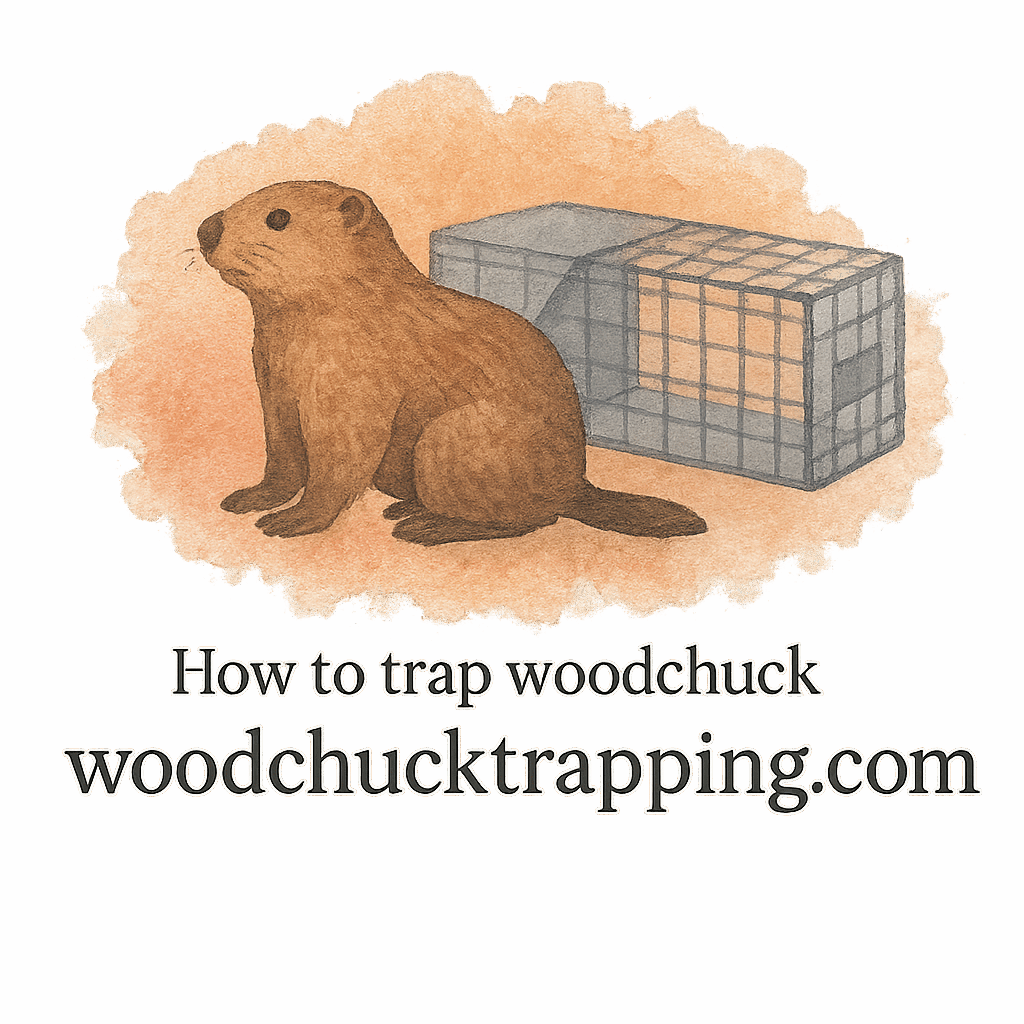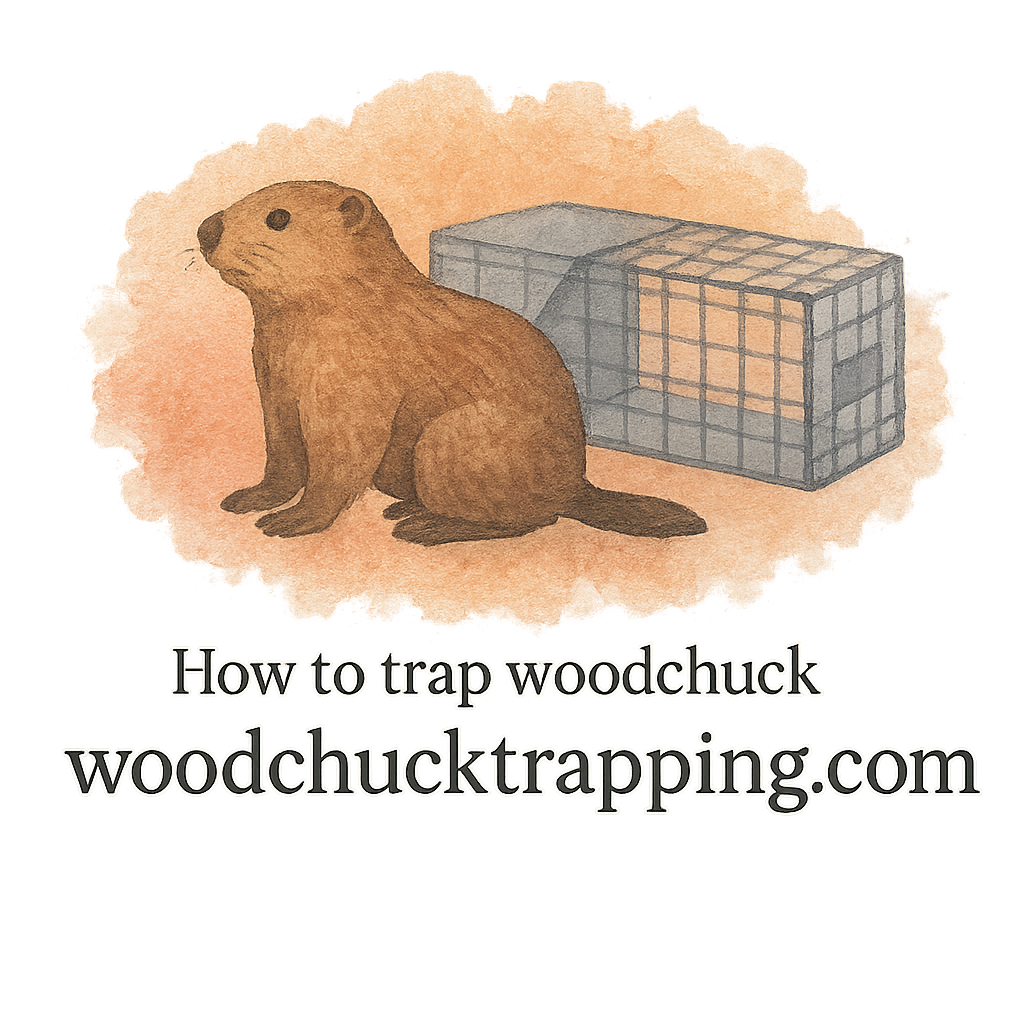Introduction
Got woodchucks digging tunnels through your beautiful garden beds? You’re not alone. These furry diggers are notorious for creating burrows, munching on vegetables, and leaving behind frustrating damage. But here’s the good news: you don’t need harsh or harmful measures to keep them away. Instead, you can use humane woodchuck trapping techniques combined with a few clever garden hacks.
In this article, we’ll walk through 11 easy hacks that not only save your garden but also protect wildlife. Let’s dig in (pun intended)!
Why Choose Humane Woodchuck Trapping Techniques?
If you’ve ever faced a woodchuck infestation, you know how tempting it can be to look for quick fixes. But going humane has long-term benefits—for you, your garden, and the animals.
Understanding the Nature of Woodchucks
Woodchucks, also called groundhogs, are natural burrowers. They dig elaborate tunnels that can weaken soil and damage crops. By learning their habits—like their love for leafy greens—you’ll have a head start in controlling them.
Check out more insights about woodchucks here: woodchucktrapping.com.
Humane vs. Inhumane Trapping
Inhumane traps may cause suffering, injure the animal, or even make the problem worse by leaving scent trails that attract more pests. On the other hand, humane woodchuck trapping techniques keep the process safe, effective, and legally sound.
Garden Hacks That Work with Humane Trapping
Now, let’s get into those easy hacks that make trapping and prevention a breeze.
1. Identify Early Signs of Woodchuck Activity
Before you can trap effectively, you need to confirm you’ve got a woodchuck problem. Look for fresh dirt piles, gnawed plants, and burrow entrances. Recognizing these signs early helps you act before the infestation spreads.
2. Locate Burrows Before Setting Traps
Burrows are the woodchuck’s safe haven. Place traps near active burrow entrances for the best results. Learn more about burrow behavior here: Burrows Guide.
3. Use the Right Trap Gear for Minimal Space
Not every yard is huge, so you’ll need traps that fit your environment.
Compact Traps for Small Yards
If you’re working with a small yard, compact traps are your best bet. They’re easy to position and won’t overwhelm the space. Read more about them here: Compact Traps.
Handling Traps Safely
Always wear gloves when setting traps. Not only does this protect you, but it also prevents transferring human scent onto the trap, which could spook the animal.

4. Choose the Best Scent Bait and Lure
The right bait can make or break your trapping success.
Natural Food Sources as Lure
Woodchucks love fresh veggies like lettuce, apples, and carrots. These simple items work wonders as lures.
Commercial Baiting & Luring Options
For stubborn woodchucks, explore commercial options. Baiting and luring products are designed to mimic irresistible scents, making traps even more effective.
5. Position Traps Near Feeding Areas
Woodchucks usually leave their burrows to forage. Place traps along these feeding paths to increase your catch rate.
6. Blend Traps with Yard Environment
Camouflaging traps with grass, leaves, or dirt makes them less intimidating. The goal is to make the trap feel like part of the natural landscape.
7. Apply Humane Handling After Capture
Once trapped, treat the animal carefully. Follow tips on handling to ensure safety for both you and the woodchuck.
8. Protect Your Garden with Prevention Measures
Prevent future damage by fencing off your garden, planting woodchuck-resistant crops, or adding barriers. Learn more damage prevention methods.
9. Combine Trapping with Damage Control
Trapping alone won’t always solve the issue. Pair it with regular maintenance to keep tunnels from weakening soil or damaging roots.
10. Follow Laws and Safety Guidelines
Every state has rules for wildlife management. Stay informed with laws and safety guidelines to avoid fines and ensure ethical practices.
11. Maintain Long-Term Prevention Strategies
Don’t stop once the woodchuck is gone. Keep monitoring burrows, rotating bait, and reinforcing garden defenses.
Tools & Equipment for Humane Woodchuck Trapping
Having the right tools makes trapping easier and safer.
Gloves, Trap Scent, and Essential Gear
Your basic toolkit should include trap scent, heavy-duty trap gear, and protective gloves. These trapping essentials prevent injury and boost success rates.
Equipment Reviews Before Buying
Before investing in traps, check equipment reviews. This ensures you pick durable and effective gear suited to your specific yard conditions.
Common Mistakes to Avoid
- Setting traps without removing human scent.
- Using the wrong bait.
- Ignoring local laws.
- Relocating animals without checking regulations.
- Not checking traps daily.
Avoiding these mistakes helps make your strategy more effective.
Expert Humane Woodchuck Trapping Techniques
Want to step up your game? These techniques work like a charm.
Best Placement Strategies
Place traps along woodchuck travel paths or burrow entrances. Explore more trapping techniques for pro-level tips.
Handling a Trapped Animal
Once you’ve caught a woodchuck, handle it gently. Avoid stress, cover the trap with a cloth, and transport safely. Learn about trapped animal care.
Conclusion
Woodchucks can wreak havoc, but with humane woodchuck trapping techniques and a few smart garden hacks, you can protect your green space without cruelty. From choosing the right lure to blending traps seamlessly into your yard, these strategies balance effectiveness with compassion.
So, the next time a furry visitor shows up uninvited, you’ll know exactly what to do.
FAQs
1. What’s the best bait for woodchucks?
Fresh veggies like carrots, apples, and lettuce are top choices, along with scent bait products.
2. Are humane traps legal in all states?
Yes, but relocation laws vary. Always check laws and safety guidelines.
3. How can I tell if I have a woodchuck infestation?
Look for tunnels, chewed plants, and fresh dirt mounds. More info here: signs of infestation.
4. Do I need special gear to trap woodchucks?
Yes—quality tools and humane trapping essentials are recommended.
5. Can I trap woodchucks in a small yard?
Absolutely. Use minimal-space traps or compact traps.
6. Is it safe to handle a trapped woodchuck?
Yes, if you follow handling guidelines and wear gloves.
7. How do I stop them from coming back?
Combine trapping with long-term prevention strategies like fencing and damage control.


